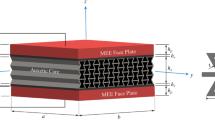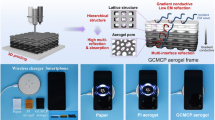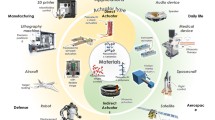Conclusions
-
1.
There is an extreme-form relationship of the mechanical (σ0.01, σ0.01/σt) and physical (δ, γ) properties of carbon steel cold-drawn wire to carbon content (0.51–0.92%). The maximum in these properties corresponds to a carbon content close to the eutectoid.
-
2.
The integral acoustic parameter Y characterizing the sound quality of the string has a similar concentration relationship.
-
3.
There is a correlation relationship between the levels of mechanical and physical properties and the acoustic parameter. The highest correlation relationship is observed between σ0.01 and σ0.01/σt and Y.
-
4.
A close level and uniform residual macrostress distribution in the section has a favorable influence on the acoustic parameter Y. This is obtained by a special postdeformation treatment, a short temper under load at 350–400°C for 1–2 sec with simultaneous elongation of the wire by 2%. As a result Y increases by 15–22% and the quality category of the string increases.
Similar content being viewed by others
Literature cited
V. G. Parvenkov, L. A. Mal'gina, V. R. Baraz, et al., "Determination of the sound quality of string wire", Zavod. Lab.,55, No. 9, 62–64 (1988).
K. P. Kolchin, "The production of piano wire", A Collection of Technical Articles on the Production of Steel Wire and Rope [in Russian], Ob'ed. Nauch.-tekh. Izd., Leningrad (1935), pp. 204–210.
A. P. Gulyaev, A. Sh. Pisarevskii, V. Ya. Gurina, and V. M. Buneev, "The acoustic properties of steel wire," Metalloved. Term. Obrab. Met., No. 3, 64–65 (1972).
A. A. Rusakov, X-Ray Diffraction of Metals [in Russian], Atomizdat, Moscow (1977).
S. S. Kivalis, The Technology of Measuring the Density of a Liquid and Solids [in Russian], Standartgiz, Moscow (1959).
V. V. Pomerantsev, Practical Methods of Correlation Analysis [in Russian], Ékonomizdat. Moscow (1963).
V. G. Gavrilyuk and V. N. Gridnev, "Decomposition of cementite in plastic deformation of steel," Metallofizika,4, No. 3, 74–87 (1982).
Inventor's Cert. 1507819 USSR, IPC C 21 8/00. A Method of Production of Steel String Wire.
N. A. D'yakonov, Grand and Upright Pianos. Design and Production [in Russian], Lesn. Promysh., Moscow (1966).
Additional information
Ural Polytechnic Institute. All-Union Scientific-Research Institute for Metal Parts. Translated from Metallovedenie i Termicheskaya Obrabotka Metallov, No. 4, pp. 41–43, April, 1992.
Rights and permissions
About this article
Cite this article
Baraz, V.R., Rundkvist, N.A. & Belov, A.V. Piano wire and strings with high acoustic properties. Met Sci Heat Treat 34, 283–287 (1992). https://doi.org/10.1007/BF00702552
Issue Date:
DOI: https://doi.org/10.1007/BF00702552




